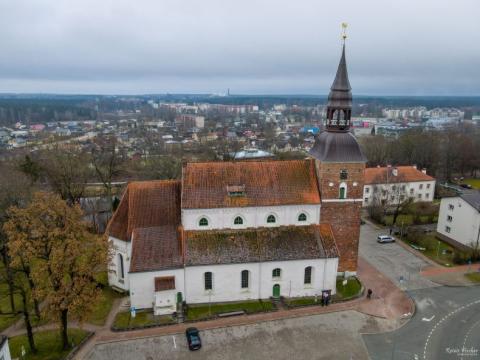Saint Simon's Church in Valmiera is one of the most noticeable objects in the city, located in the heart of the city on Bruņinieku iela 2.
The architecture of St Simon's Church combines the Romanesque and Gothic styles. The church boasts 15th-16th century burial plaques of the city's notables, a pipe organ built in 1886 by a well-known European organ builder Friedrich Ladegast, and paintings on the pulpit and the organ loft made back in 1730. The church tower accommodates an exhibition space, and the viewing platform overlooks the panorama of Valmiera.

Saint Simon's Church in Valmiera
St Simon's Church of Valmiera was built on a steep bank of the River Gauja in 13th century. There exist rather reliable records to the fact that the construction of St Simon's Church began in 1283. It is believed that the church's name is related to its consecration on the Day of Sts Simon and Jude (in Latvian - Simjūda diena), 28 October. The building was damaged during wars and in fires.
Originally, St Simon's Church hosted a Catholic congregation. In 1554 in Valmiera, freedom to pursue Lutheran faith in Livonia was proclaimed that restricted clashes between Catholics and the adherents of the new faith.
In 1964 St Simon's congregation was forced to move to the new Baptist house of prayer, as the church came to accommodate a museum. The congregation returned to the building in 1988, but the ownership rights were legally restored only in 1996.
In the second half of the 19th century, the organ built by Friedrich Ladegast, with 33 stops, 3 manuals, 1 pedal, and a Neogothic facade was installed in the church. The instrument is a specimen of a Romantic organ, and ranks among the best in Latvia.
